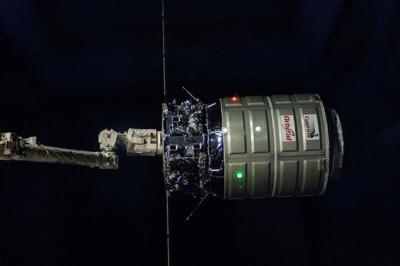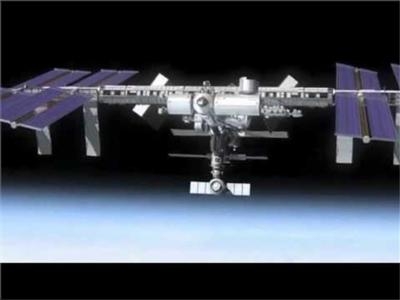Wed, Jun 15, 2016
Has Departed ISS, Now Conducting Science In Space
The “S.S. Rick Husband” Cygnus spacecraft successfully departed from the International Space Station at 0930 EDT Tuesday, completing an 81-day stay at the orbiting laboratory. The mission, known as OA-6, began on March 22, 2016 when Cygnus launched aboard a United Launch Alliance Atlas V rocket from Cape Canaveral Air Force Station, Florida. Cygnus delivered 7,900 pounds of cargo and science experiments to astronauts aboard the station. Prior to its departure, the astronauts loaded the unmanned cargo module with approximately 4,087 pounds of items for disposal.

Orbital ATK’s fifth mission under NASA’s Commercial Resupply Services-1 (CRS-1) contract now begins its second phase before the planned reentry of Cygnus into Earth’s atmosphere. Cygnus will conduct three, in-orbit science experiments: the Spacecraft Fire Experiment-I (Saffire-I), the deployment of five CubeSat satellites from the NanoRacks CubeSat Deployer and the Reentry Breakup Recorder (REBR) test.
“Cygnus had a successful, two-and-a-half-month stay at the International Space Station, delivering vital cargo to the astronauts,” said Frank Culbertson, President of Orbital ATK’s Space Systems Group. “Now, the work continues as we demonstrate expanded capabilities for Cygnus beyond its core cargo delivery function. The next phase of this mission marks the first time that Cygnus will serve as a research platform to support science experiments that enable deep space exploration. Our ability to conduct these tests further highlights the versatility and flexibility that Cygnus offers to our customers.”
The Spacecraft Fire Experiment-I (Saffire-I) will feature the first of three tests to study the behavior of large fires in microgravity. Following departure from the International Space Station, engineers will remotely conduct the first Saffire experiment. Onboard Cygnus, the experiment developed at NASA’s Glenn Research Center with the support of NASA’s Advanced Exploration Systems Division will intentionally ignite and record a large-scale fire that will grow and advance until it burns itself out.

Next, using a deployer provided by NanoRacks, the “S.S. Rick Husband” will place five CubeSats into orbit to conduct their own autonomous missions.
The final experiment to take place aboard Cygnus features the Reentry Breakup Recorder (REBR). REBR will measure and record data during Cygnus’ safe destructive reentry into Earth’s atmosphere. The scheduled date for reentry is June 22, officially ending the OA-6 mission.
(Source: Orbital ATK news release. Images from file)
More News
With Testing Soon Complete, Launch Preparations Begin in Earnest Sierra Space's Dream Chaser has been put through the wringer at NASA's Glenn Armstrong Test Facility in Ohio, but w>[...]
Takeoff Roll The process whereby an aircraft is aligned with the runway centerline and the aircraft is moving with the intent to take off. For helicopters, this pertains to the act>[...]
“We’re proud of the hard work that went into receiving this validation, and it will be a welcome relief to our customers in the European Union. We couldn’t be mor>[...]
"Aircraft Spruce is pleased to announce the acquisition of the parts distribution operations of Wag-Aero. Wag-Aero was founded in the 1960’s by Dick and Bobbie Wagner in the >[...]
IDENT Feature The special feature in the Air Traffic Control Radar Beacon System (ATCRBS) equipment. It is used to immediately distinguish one displayed beacon target from other be>[...]
 Sierra Space Repositions Dream Chaser for First Mission
Sierra Space Repositions Dream Chaser for First Mission ANN's Daily Aero-Term (05.10.24): Takeoff Roll
ANN's Daily Aero-Term (05.10.24): Takeoff Roll Aero-News: Quote of the Day (05.10.24)
Aero-News: Quote of the Day (05.10.24) Aero-News: Quote of the Day (05.11.24)
Aero-News: Quote of the Day (05.11.24) ANN's Daily Aero-Term (05.11.24): IDENT Feature
ANN's Daily Aero-Term (05.11.24): IDENT Feature




